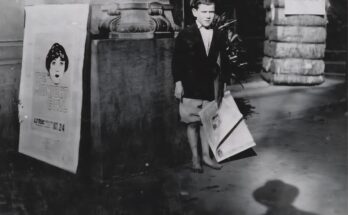Sándor Lederer was born in the small village of Jand, located in Bereg County, then part of the Kingdom of Hungary. Like many Jews in rural Hungary, he likely grew up in a close-knit community centered around religious traditions, family ties, and a deep-rooted connection to the land. The Jewish communities in such villages often lived modest lives, contributing to local economies as craftsmen, traders, and farmers, while preserving a rich cultural and spiritual heritage. Sándor’s early life would have been shaped by the rhythms of both village life and Jewish observance.
By the early 20th century, Hungarian Jews had established themselves as a vital part of national life, but they also lived under a growing shadow of nationalism and anti-Semitism. These tensions escalated dramatically with Hungary’s alliance with Nazi Germany during World War II. In 1944, when Germany occupied Hungary, the fate of the country’s Jewish population took a catastrophic turn. The occupation led to the rapid implementation of anti-Jewish decrees and preparations for mass deportation, carried out with shocking speed and efficiency.
Sándor had settled in the town of Abaújszántó, a quiet place in northeastern Hungary. But that peace was shattered in the spring of 1944. Following the German occupation in March, the Hungarian authorities, collaborating with the Nazis, began rounding up Jews from rural towns and villages. Sándor was among those seized and forced into the temporary ghetto in Kassa (today Košice, Slovakia). Ghettos like the one in Kassa were overcrowded, unsanitary, and designed to hold Jews under brutal conditions until deportation trains could be arranged.
In May 1944, Sándor was crammed into a cattle car bound for Auschwitz-Birkenau. The deportations from Hungary, conducted in just eight weeks, resulted in the transport of nearly 440,000 Jews—one of the most rapid mass deportations of the Holocaust. The journey to Auschwitz was horrific. Deported Jews endured days in sealed wagons without food, water, or toilets. Many died en route from exhaustion, dehydration, and terror. For Sándor, like thousands of others, the arrival at Auschwitz marked the end of an already devastating ordeal.
Once the train reached Auschwitz, the selection process began immediately on the infamous ramp. Nazi SS officers divided the deportees: some were sent to forced labor, while the majority—especially women, children, the elderly, and anyone deemed unfit for work—were sent straight to the gas chambers. Sándor Lederer was among those murdered upon arrival. No trial, no reason, no final words—just a systematic, bureaucratic decision to end his life in one of the camp’s killing facilities.
Auschwitz-Birkenau was designed for mass murder. The gas chambers operated with chilling efficiency. Victims were told they were going for showers, stripped of their clothing and dignity, and gassed with Zyklon B. Within minutes, Sándor’s life was extinguished, part of the industrial slaughter of European Jewry. His name joined the silent chorus of the dead—one of over 430,000 Hungarian Jews murdered in the Holocaust.
Though Sándor Lederer’s life was stolen, his memory endures. He was not a number or a faceless victim—he was a man from Jand, a son of Hungary, a human being who loved, lived, and hoped. Remembering him is a rejection of the hatred that sought to erase him. His story is a testimony to the lives cut short and a warning of what can happen when prejudice and power go unchecked.
By telling the story of Sándor Lederer, we uphold the memory of the millions who perished and honor the resilience of those who have worked to preserve their legacies. Each life lost in the Holocaust is a world destroyed—but also a story worth telling. Sándor’s story is one of them. We remember him today, and we say his name so that he will not be forgotten.


